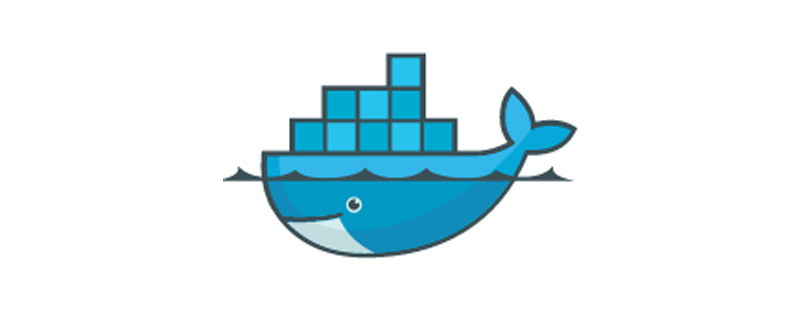 Operation and Maintenance
Operation and Maintenance
 Docker
Docker
 What should I do if docker displays Chinese garbled characters?
What should I do if docker displays Chinese garbled characters?
What should I do if docker displays Chinese garbled characters?
Solution to docker displaying garbled Chinese characters: 1. Check the supported languages through the locale command; 2. Add the environment variable "LANG=en_ZW.utf8".

The operating environment of this article: centOS6.8 system, Docker version 20.10.11, Dell G3 computer.
What should I do if docker displays Chinese garbled characters?
Docker Chinese garbled characters
locale command to see which languages are supported
[root@0ca5b90999e6 soft]# locale -a|grep utf8 en_AG.utf8 en_AU.utf8 en_BW.utf8 en_CA.utf8 en_DK.utf8 en_GB.utf8 en_HK.utf8 en_IE.utf8 en_IN.utf8 en_NG.utf8 en_NZ.utf8 en_PH.utf8 en_SG.utf8 en_US.utf8 en_ZA.utf8 en_ZM.utf8 en_ZW.utf8
Add environment variables
[root@0ca5b90999e6 soft]# vim /etc/profile LANG=en_ZW.utf8 [root@0ca5b90999e6 soft]# source /etc/profile
Note:
1. When docker runs, it is best to add /usr/sbin/init at the end to start systemd (according to requirements)
2. In addition, my dockerfile startup command is CMD /etc/init.d/sh /init.sh, one more script will be started, which will automatically source, so there is no need to rebuild the container
#!/bin/bash source /etc/profile /usr/sbin/sshd -D /bin/bash
Recommended learning: "docker video tutorial"
The above is the detailed content of What should I do if docker displays Chinese garbled characters?. For more information, please follow other related articles on the PHP Chinese website!

Hot AI Tools

Undresser.AI Undress
AI-powered app for creating realistic nude photos

AI Clothes Remover
Online AI tool for removing clothes from photos.

Undress AI Tool
Undress images for free

Clothoff.io
AI clothes remover

Video Face Swap
Swap faces in any video effortlessly with our completely free AI face swap tool!

Hot Article

Hot Tools

Notepad++7.3.1
Easy-to-use and free code editor

SublimeText3 Chinese version
Chinese version, very easy to use

Zend Studio 13.0.1
Powerful PHP integrated development environment

Dreamweaver CS6
Visual web development tools

SublimeText3 Mac version
God-level code editing software (SublimeText3)

Hot Topics
 1654
1654
 14
14
 1413
1413
 52
52
 1306
1306
 25
25
 1252
1252
 29
29
 1225
1225
 24
24
 How to exit the container by docker
Apr 15, 2025 pm 12:15 PM
How to exit the container by docker
Apr 15, 2025 pm 12:15 PM
Four ways to exit Docker container: Use Ctrl D in the container terminal Enter exit command in the container terminal Use docker stop <container_name> Command Use docker kill <container_name> command in the host terminal (force exit)
 How to copy files in docker to outside
Apr 15, 2025 pm 12:12 PM
How to copy files in docker to outside
Apr 15, 2025 pm 12:12 PM
Methods for copying files to external hosts in Docker: Use the docker cp command: Execute docker cp [Options] <Container Path> <Host Path>. Using data volumes: Create a directory on the host, and use the -v parameter to mount the directory into the container when creating the container to achieve bidirectional file synchronization.
 How to restart docker
Apr 15, 2025 pm 12:06 PM
How to restart docker
Apr 15, 2025 pm 12:06 PM
How to restart the Docker container: get the container ID (docker ps); stop the container (docker stop <container_id>); start the container (docker start <container_id>); verify that the restart is successful (docker ps). Other methods: Docker Compose (docker-compose restart) or Docker API (see Docker documentation).
 How to check the name of the docker container
Apr 15, 2025 pm 12:21 PM
How to check the name of the docker container
Apr 15, 2025 pm 12:21 PM
You can query the Docker container name by following the steps: List all containers (docker ps). Filter the container list (using the grep command). Gets the container name (located in the "NAMES" column).
 How to start mysql by docker
Apr 15, 2025 pm 12:09 PM
How to start mysql by docker
Apr 15, 2025 pm 12:09 PM
The process of starting MySQL in Docker consists of the following steps: Pull the MySQL image to create and start the container, set the root user password, and map the port verification connection Create the database and the user grants all permissions to the database
 How to start containers by docker
Apr 15, 2025 pm 12:27 PM
How to start containers by docker
Apr 15, 2025 pm 12:27 PM
Docker container startup steps: Pull the container image: Run "docker pull [mirror name]". Create a container: Use "docker create [options] [mirror name] [commands and parameters]". Start the container: Execute "docker start [Container name or ID]". Check container status: Verify that the container is running with "docker ps".
 How to update the image of docker
Apr 15, 2025 pm 12:03 PM
How to update the image of docker
Apr 15, 2025 pm 12:03 PM
The steps to update a Docker image are as follows: Pull the latest image tag New image Delete the old image for a specific tag (optional) Restart the container (if needed)
 How to view logs from docker
Apr 15, 2025 pm 12:24 PM
How to view logs from docker
Apr 15, 2025 pm 12:24 PM
The methods to view Docker logs include: using the docker logs command, for example: docker logs CONTAINER_NAME Use the docker exec command to run /bin/sh and view the log file, for example: docker exec -it CONTAINER_NAME /bin/sh ; cat /var/log/CONTAINER_NAME.log Use the docker-compose logs command of Docker Compose, for example: docker-compose -f docker-com



